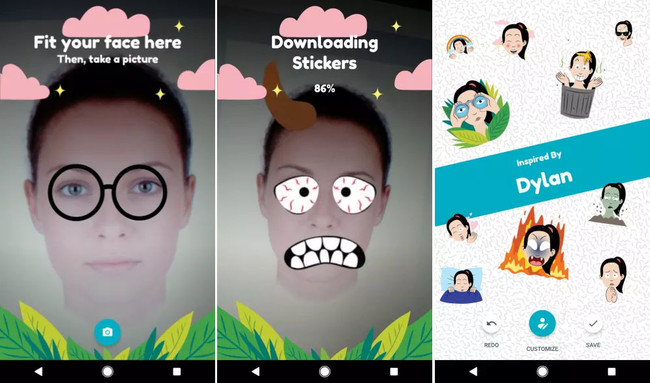The world’s top corporations are now investing time, money, and some serious technology into messaging stickers.
Google, which has the grandiose mission of making all the world’s information accessible to all, is now letting users create stickers from their own selfies. Google’s messaging app Allo will now let users take their own pictures, and use advanced computer vision techniques to transform them into a sticker pack. Which means that instead of sending stickers and emoji that look like random people, users will be able to send stickers and emoji that look like themselves.
Want to spruce up your selfie? Try the Allo feature that uses #NeuralNetworks turn your selfie into a sticker pack https://t.co/BRacyC0VF2 pic.twitter.com/5D73N0wPsI
— Google Research (@googleresearch) May 11, 2017
This might sound like a trivial pursuit for a company that is also trying to make self driving cars, but Google appears to have realized that hard tech might not always be the solution to building a successful social network. Even with all its resources at its disposal, Google has been famously unsuccessful at launching any social networks of note, with the much-hyped Google Plus being its most prominent failure. Google has also given away ground in spaces where it once was a leader, such as messaging — nearly a decade ago, Google Chat was one of the most prominent messengers around, but it has since been leapfrogged by newer companies such as WhatsApp. Investor Chris Sacca, who’s previously worked at Google, says that the company is exceptional at solving hard technical problems, such as search, but is often lacking in being able to create softer, more arty products that users like.
Google’s now quite literally trying to get into art (as much as selfie stickers can be considered art). Snapchat and Facebook have shown that users are tremendously interested in own photos, and enjoy playing around with filters and stickers. Google Allo uses advanced computer vision to process user selfies, before using artwork created by a team of artists to produce a likeness. Google’s neural networks scan selfies for qualitative features, such as eye color, and based on the result, an appropriate human-drawn selfie pack is created. Google says that 563 quadrillion different combinations of stickers can be made, so users can be reasonably sure that their image will be theirs alone.
Google’s used this approach of combining human drawings with computer vision most recently in its Autodraw project, which allows users to sketch a rough drawing, which is then instantly converted into a better drawn drawing by a professional. Autodraw worked fairly well, with even rough scribbles being recognized by the algorithms, and being replaced by better drawings. Selfie stickers are also a pretty cool tool, and are along the lines of features that users have previously shown interest in. But Google’s Allo is off to a slow start — adoption rates have been low, and it’s barely made a dent in the space occupied by WhatsApp and Facebook Messenger. Clever selfie stickers might be a start towards getting users, but one wonders if it will be enough.
